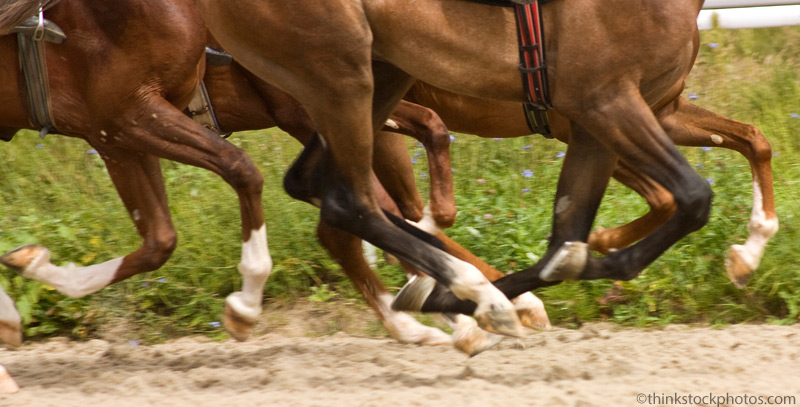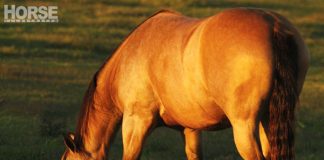Q: I recently discovered that my horse has ringbone. He is on a joint supplement for now but what else can you do to treat and prevent ringbone? What exactly is it and how long until I will see the side effects? I am in close contact with my vet as well. My horse is a 4 year old OTTB gelding.

A: Although your horse, at four years of age, sounds a little young to already be developing ringbone, being an off-track-Thoroughbred means he has worked hard and possibly over some concussive surfaces, two things that set horses up for this condition. Other risk factors for ringbone are:
- Poor conformation (specifically short, upright pasterns or high, contracted heels such as with a “club foot”);
- Poor trimming/shoeing (mismatched hoof pastern angles either “broken forward” or “broken backward”);
- Trauma or instability to the area.
The area that we’re talking about is from the fetlock or ankle to the hoof. The bone in the hoof is commonly called the coffin bone, and is also known as the distal phalanx or P3. It is connected at about the level of the coronary band to the middle phalanx (P2) or short pastern bone by the coffin joint. Above P2 is P1 or the proximal phalanx, aka long pastern bone. The two pastern bones are connected by the pastern joint.
Now that we’ve covered the basic anatomy, what goes wrong? Because of hard work over time, poor conformation or foot care, or even an injury or instability to the area, the body uses its natural inflammatory response to protect the area through calcification or the production of extra bone tissue. This can occur at or near the coffin joint – which is called “low ringbone” – or at or near the pastern joint – which is called “high ringbone.” The affected area may be warm, swollen, or painful, and it may be possible eventually to palpate this extra bony growth. In addition to a hands-on physical exam, your veterinarian no doubt took x-rays after watching your horse travel. He or she may also have done lower limb flexion tests, to see if bending the joints hurts, as well as blocked the nerves to the area to see if numbing it makes the horse move pain-free. While some horses become outright lame from ringbone, initially you may detect stumbling, shuffling, or tripping; a short, choppy stride; reluctance to turn or stop sharply; or just a lack of desire to move forward or perform at his previous level.
Treatment-wise, you’ll want to be in close contact with your farrier as well as your vet, since corrective trimming and/or shoeing can be very important in making your horse comfortable and in prolonging his career. When the ringbone is active, your veterinarian may advise rest, ice, and non-steroidal anti-inflammatories (NSAIDs). When it’s time to get back to work, you’ll want to have discussed your horse’s ideal body weight, the footing you’re riding on, his exercise and turnout schedule, the judicious use of joint supplements, and options for prescription medication such as topical pain relievers, joint injections, and other therapies. At some point, you’ll need to have a serious conversation about when it’s time to give your horse an easier job (such as moving from hunter/jumpers to dressage, or from reining to western riding). With careful attention and care, horses with ringbone can have long and productive performance careers.






